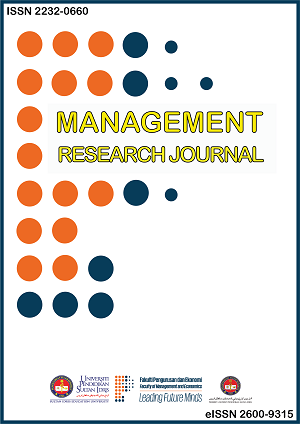Empowering the Management of Ambulance Personnel in the Klang Valley: A Transformational Leadership Approach
DOI:
https://doi.org/10.37134/mrj.vol13.1.10.2024Keywords:
Transformational Leadership, Safety Behavior, Safety Climate, Idealized Influence, Inspirational MotivationAbstract
This study aims to assess the level of transformational leadership among ambulance personnel in the Klang Valley and its relationship with safety behavior and workplace safety climate. Using a descriptive and inferential quantitative approach, data were collected through questionnaires involving ambulance personnel from various hospitals in the Klang Valley. A stratified sampling method was used to ensure a proportional representation of each hospital in the study sample. The main instrument used was the MLQ6 questionnaire, which evaluates dimensions of transformational leadership such as idealized influence, inspirational motivation, intellectual stimulation, and individualized consideration. The results of the study indicate that the overall level of transformational leadership among ambulance personnel is high, with the dimensions of "Intellectual Stimulation" and "Individualized Consideration" recording the highest scores. Further analysis shows that transformational leadership significantly influences safety behavior and perceptions of the safety climate, with personnel reporting higher levels of transformational leadership also demonstrating better safety behavior and a more positive perception of the safety climate. This study highlights the importance of practicing transformational leadership among managers and supervisors of ambulance personnel to enhance safety and service quality. The study's recommendations include strengthening transformational leadership training in the professional development programs for ambulance personnel and exploring the long-term effects of this leadership style on their performance and well-being. The implementation of transformational leadership in the ambulance service sector is expected to improve work culture and safety, thereby enhancing the quality of service provided to the community.
Downloads
References
B.M. Bass, R. E. R. (2006). Transformational leadership (2nd ed.), Erlbaum, Mahwah, NJ.
Bass, B. M., & Aviolo, B. J. (2004). Sample Items From the Multifactor Leadership Questionnaire ( MLQ ) Form 5X-Short. Multifactor Leadership Questionnaire, 2004.
Bass, B. M., & Avolio, B. J. (1994). Improving organizational effectiveness through transformational leadership. Sage.
Judge, T. A., & Piccol, R. F. (2004). Transformational and transactional leadership: A meta-analytic test of their relative validity. Journal of Applied Psychology, 89(5), 755–768. https://doi.org/10.1037/0021-9010.89.5.755
Northouse, P. G. (2021). Leadership: Theory and practice. Sage publications.
Wu, T. C., Chang, S. H., Shu, C. M., Chen, C. T., & Wang, C. P. (2011). Safety leadership and safety performance in petrochemical industries: The mediating role of safety climate. Journal of Loss Prevention in the Process Industries, 24(6), 716–721. https://doi.org/10.1016/j.jlp.2011.04.007
Downloads
Published
How to Cite
Issue
Section
License
Copyright (c) 2024 Jamaludin Nasir bin Romli

This work is licensed under a Creative Commons Attribution-NonCommercial-ShareAlike 4.0 International License.





